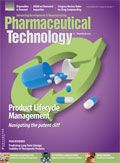Congress Revises Rules for Drug Compounding and Supply-Chain Security
Legislators agree on a limited bill affirming FDA authority over compounders while setting up a process for national drug tracking.
Public outrage over deaths from contaminated injectables produced by large compounding pharmacies, along with rising concerns about counterfeit and unauthorized drugs entering the US market, managed to lift the stalemate on Capitol Hill long enough to gain agreement on reform legislation. After years of heated negotiations and multiple public hearings, Democrat and Republican leaders of the House Energy & Commerce (E&C) Committee and the Senate Health, Education, Labor and Pensions (HELP) Committee unveiled a compromise bill on Sept. 25, 2013 (1). The Drug Quality and Security Act (H.R. 3204) provides more clarity and predictability to drug oversight and moves forward initiatives designed to enhance the safety and quality of medicines in the US.
Limited compounding oversight
The Compounding Quality section of the bill does little to actually extend FDA rules to ensure that products from large drug compounders meet quality standards. The main advance is to clarify the agency’s authority to regulate pharmacy compounders in general under section 503A of the Food, Drug and Cosmetics Act. A series of court rulings over the past decade have undermined FDA authority in this area; the new legislation should make it easier for FDA to take action against violative firms and to defend the legitimacy of its rules.
Otherwise, the bill falls far short of giving FDA the means to identify those large compounders that operate as drug manufacturers, even those producing sterile injectables. Instead, Congress establishes a voluntary program for large “outsourcing facilities” to register with FDA and agree to meet quality standards. Outsourcing facilities would have to pay fees, report adverse events, and adhere to quality and reporting requirements. In addition, these firms--as with all compounders--could not routinely produce drugs that are “essentially a copy of a marketed drug,” language important to drug manufacturers. But the limitation does not apply to drug shortage situations. There are curbs on outsourcers making certain products that raise safety issues and appear on an FDA no-compounding list, as well as limits on producing drugs subject to risk evaluation and management strategies (REMS) that carry limited distribution requirements.
By making registration voluntary, small-scale compounders escape new rules, which is important to pharmacists and the compounding community. But it’s not clear that any compounders will opt for FDA oversight. The expectation is that large operators producing sterile drugs will want to demonstrate the quality of their products to gain an advantage over unregistered producers in marketing to hospitals and clinics. However, it remains to be seen if providers are willing to pay a premium for products from registered facilities. The voluntary program creates the potential for the market to drive high-quality standards, says Allan Coukell, senior director for drug and medical devices at The Pew Charitable Trusts. But he recognizes that this is tricky because quality compounders “will have to compete against those operating at lower standards,” according to a letter to House and Senate leaders dated Sept. 26, 2013.
The legislation provides for enhanced communication between FDA and state pharmacy boards to better coordinate policies and oversight. The Government Accountability Office will assess the legislation’s impact after three years.
Pharmacists praised the bill, while manufacturers remained largely silent on the measure. Harsh criticism came from Michael Carome, director of Public Citizen’s Health Research Group, who declared that the measure will actually make it easier for unscrupulous compounders to produce substandard drugs (2). At the same time, the International Academy of Compounding Pharmacists complained that the bill gives FDA “sweeping, unprecedented authority” to determine what pharmacies can compound. Its beef is that there’s no provision for anticipatory compounding to provide physicians in advance with therapies for “office use” (3).
But these complaints were lost in the loud applause for the measure and Congress’ desire to show it can act to prevent future outbreaks of meningitis and other dangers from contaminated drugs. The measure may help FDA identify violative operators more quickly and encourage more collaborative scrutiny of compounders by state and federal agencies. FDA, however, will face many of the same hurdles as it does today in identifying bad actors and enforcing standards.
Pre-empting states
Manufacturers are much more invested in the drug supply-chain security section of the act, which takes the important step of pre-empting state pedigree laws, including the comprehensive California statute slated to go into effect in 2015. Pharmaceutical companies and wholesalers thus achieved their main goal of replacing the growing patchwork of state tracking and labeling requirements with a uniform federal system that promises to be more effective and less costly to implement.
The legislation generally follows the bill drafted earlier by the Senate in establishing a 10-year process for creating an electronic, interoperable, unit-level drug tracking system that includes manufacturers, wholesalers, repackagers, and dispensers (i.e., retail and hospital pharmacists) of prescription drugs. During the phase-in period, the legislation sets a schedule for providing pedigrees on drugs moving through the distribution system and for manufacturers to affix unique product identifiers to packages and cases.
First, manufacturers, wholesalers, and repackagers have to supply pedigrees on drugs they handle by Jan. 1, 2015; pharmacists have another six months to comply. In four years, manufacturers have to include on packages a unique, two-dimensional product identifier with a serial number up to 20 characters that includes data on product lot and expiration date. A lot-level electronic tracking system would go into operation in the fourth year, followed by unit-level tracking six years later.
There are provisions for notifying FDA of illegitimate products; for handling product returns and and recalls; for dealing with combination products and drug samples; and for tracking drop shipments from manufacturers to dispensers. All parties will need systems to verify that products are legitimate (i.e., not counterfeit, diverted, stolen, or adulterated) and to purge violative products from the supply chain.
FDA has a lot of work to do. The program requires guidance on dealing with suspect and illegal products, on unit level tracing, and on standards for an interoperable data exchange. The agency has to hold public meetings to get input on these policies and run pilot projects to test new systems. There will be a waiver process for small pharmacists and repackagers to seek exemptions from requirements, plus adjustments for drugs in the supply chain prior to the legislation.
Third-party logistics providers such as Federal Express and UPS have to be licensed, meet shipping and storage regulations, and submit annual reports to FDA. But they don’t have to comply with recordkeeping and pedigree requirements, a caveat that raises fears about creating serious gaps in the tracking process.
Despite these and other concerns, the track-and-trace policy drew loud applause from pharma and biotech companies and other supply-chain parties. Cancer organizations chimed in with praise for gaining protections from substandard medicines. The Congressional Budget Office quickly calculated that the bill adds little cost to the government because new fees would offset outlays. And despite the budget battle on Capitol Hill, the legislation moved forward, largely because some of the provisions are important, and many new policies are sufficiently modified to satisfy pharmacists, compounders, and states.
References
1. Drug Quality and Security Act
2. M. Carome, Public Citizen, (Sept. 27, 2013), accessed Oct. 11, 2013.
3. IACP, “Compromise Compounding Bill Will Not Advance Quality, Safety,” press release (Sept. 27, 2013), www.iacprx.org.

Jill Wechsler is Pharmaceutical Technology's Washington editor, Chevy Chase, MD, 301.656.4634, jwechler@advanstr.com. Read Jill's blog at PharmTech.cm/wechsler.

Pharmaceutical Tariffs Are Imminent: How Industry is Bracing for Impact
April 16th 2025On April 14, 2025, the Trump Administration launched a national security-driven investigation into pharmaceuticals, a move that will likely result in tariffs being placed on pharmaceutical drugs, ingredients, and other components that are imported from outside of the United States.